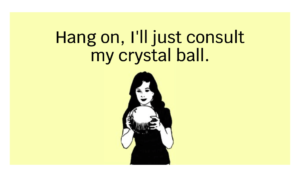By Hilary O’Dwyer, CEO, Titian Consulting
This month’s focus is all about how to navigate the current world of rising costs in our business, and my 2 Minute Takeaway speaks about examining our base costs to really understand what we can and can’t run our business without.
We’ve all felt the pinch of the increasing cost of living – groceries, utilities, transport; the price of everything is going up. I’m sure that the thought of another interest rate rise is making many of us feel sick, with some even wondering if the next one might be the straw that breaks the camel’s back.
It is critical at this time to look at your cost base and really tease it apart to figure out what is discretionary and what isn’t, and while I’m speaking in business terms primarily, these lessons can also be used in your home budget.
I was speaking with someone recently and she said that one of the main subscriptions that she requires to run her business has increased their prices by 25%, which is an increase that has a huge impact on a small business. She wouldn’t have even been aware of it if she hadn’t been checking her monthly spend, and as it turns out they were perfectly entitled to up their prices without letting her know due to their T&Cs, but it made her wonder what else she is paying for that she isn’t aware of.
As the economic environment tightens up for everyone, we have to examine what we are spending our money on and what items we’re paying for that we can run our business without.
Costs can be put into buckets such as:
- ‘keep the lights on expenses’
- ‘discretionary costs’
- fixed costs
- sales costs
It’s fair to say that business owners can be quite restricted in their view as to what they can’t live without, but when forced to look critically at base costs to find ways to save money there may be items that are discretionary. A lot of expenses we incur in our day to day business are a choice, and sometimes it takes external pressures for us to really see them as a choice. But depending on what industry you’re in and the type of business you own, these choices will be different for each of us.
For example, marketing costs – PR, advertising, website, etc – are often the first things to be slashed in a cost cutting exercise in large entities. But when you’re a smaller business, you need to make sure you’re thinking about your costs appropriately – for example, are marketing costs discretionary or are they an investment that will be crucial to filling up your sales funnel in the future?
Another big one, and often the first one I suggest people look at, is your subscriptions. Often used to help with areas in your business such as bookkeeping, marketing, and productivity, primarily to save you time and streamline your processes. But if you have less business on, then you have more time so you can possibly take on more mundane tasks and save your business that money that you can then move into one of your other buckets, e.g. ‘keep the lights on expenses’ or ‘fixed costs’.
As costs increase across the board, looking critically at your business (or home) spending is the best way to confidently move forward as we prepare ourselves for ongoing financial challenges.





